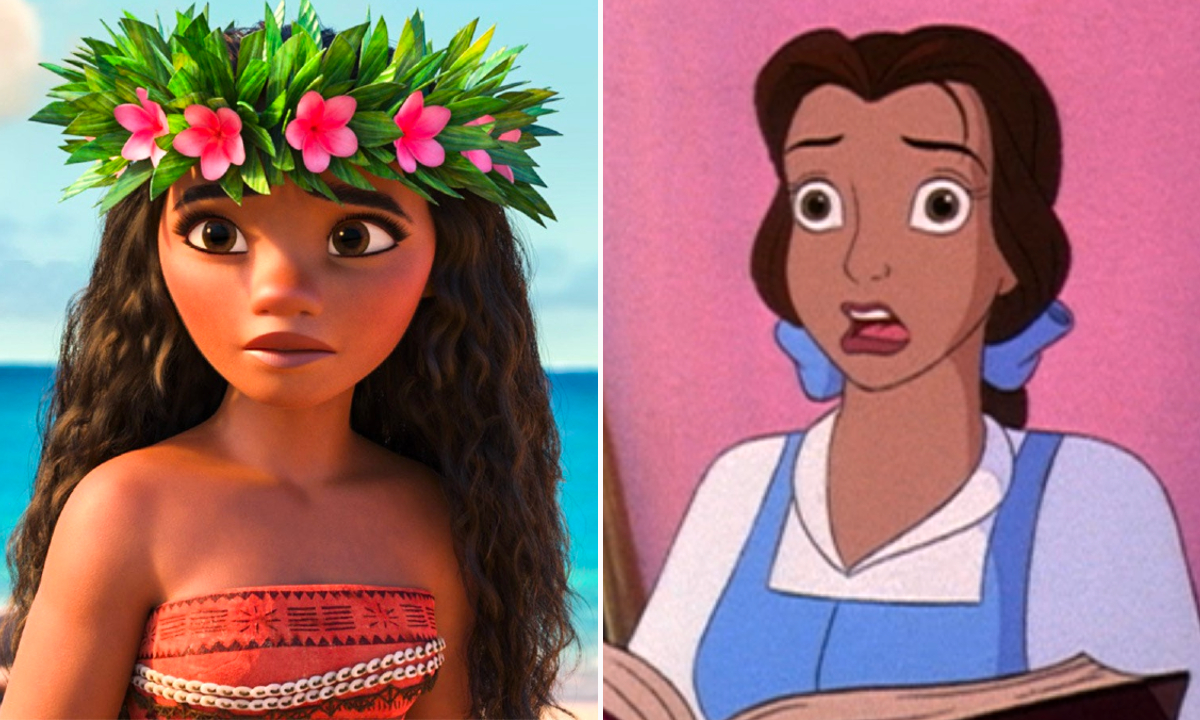‘Moana 2’ Is Giving Flashbacks to One of Disney’s Worst Eras

This week, Disney announced release dates for several upcoming movies, including one that left many surprised—and a little baffled: Moana 2. For those who recall Disney’s track record in the late ’90s and early ’00s, the sequel just seems like another sign that the studio is moving backwards.
During an appearance on CNBC ahead of Disney’s quarterly earnings call, CEO Bob Iger made a surprise announcement: Moana 2, a sequel to the hit 2016 animated musical, is hitting theaters on November 27. Last fall, Dwayne Johnson revealed that he’s reprising his role as the god Maui in a live-action reimagining of Moana, which is still in the works at Disney. But Iger’s announcement—accompanied by a brief teaser—was the first public mention of a Moana animated sequel, and the details surrounding its development have left some confused.
Notably, Lin-Manuel Miranda isn’t returning to write new songs for Moana 2, which will instead feature music by Abigail Barlow and Emily Bear, along with Opetaia Foa’i and Mark Mancina, both of whom worked on the first film. The second curious thing about the Moana sequel is that it wasn’t originally developed as a movie; Moana 2 began as an animated series, which has now been recut into a feature-length film. Iger was reportedly so impressed by the footage from the series that he decided it should be a movie instead.
While that may very well be true, I couldn’t help but think of another time when Disney took an animated series and recut it into a movie. Back in 1998, Disney was at the tail-end of the Disney Renaissance, a period of great commercial and critical success that began in 1989 with the release of The Little Mermaid and continued through much of the ’90s with films including Beauty and the Beast and The Lion King. Under the leadership of then-CEO Michael Eisner, Disney tried to capitalize on its success at the box office by increasing the output of its animation departments. As Vulture critic Bilge Ebiri explains in his history of the decline of hand-drawn animation at Disney, the success of The Lion King made the studio “more aggressive” in its release strategy:
They split the animation unit and pushed for faster timelines. They put out cheap, direct-to-video sequels to some of their most beloved titles, thus devaluing their brand. (Remember The Lion King 2: Simba’s Pride?) Meanwhile, event releases like Pocahontas, Hercules, and Mulan failed to replicate the success of The Lion King. By contrast, another Disney-affiliated company was bounding from success to success with computer-animated hits: Pixar had produced the first Toy Story in 1995, and within a decade it would have Monsters, Inc., Finding Nemo, and The Incredibles to its name.
In the ’90s, Disney released a whole junkpile of direct-to-video animated sequels, beginning with 1994’s The Return of Jafar and continuing with titles such as Around the World With Timon and Pumbaa, Pocahontas II: Journey to a New World, The Little Mermaid II: Return to the Sea, and a series of sequels to Beauty and the Beast. Most of these were rush-jobs featuring sub-par animation, but one title was actually never intended to become a movie in the first place: Belle’s Magical World. Released in 1998, the sequel was comprised of episodes from an unaired Beauty and the Beast series. The animation was also notoriously shoddy; Belle’s eyes never seemed to be looking in the same direction. With a little recutting and the addition of some interstitial footage, the episodes became another direct-to-video cash-grab.
Which brings us back to Moana 2. Like Belle’s Magical World, the Moana sequel is just a recut version of an unreleased animated series. It’s also arriving during another low period for Disney: 2023 was the studio’s worst year at the box office in over a decade. Not even Pixar, which enjoyed massive success during Disney’s downturn in the early ’00s, or Marvel Studios, which contributed to the studio’s domination in the 2010s, could save Disney from itself. Releases that might’ve been hits for any other studio—including The Marvels, Indiana Jones and the Dial of Destiny, Wish, and Elemental—were relative flops for Disney, and failed to reach box office milestones that were once easily surpassed.
While I sincerely hope that Moana 2 is every bit as good as Iger seems to believe, the circumstances surrounding its announcement suggest that Disney is turning to old strategies to get itself out of a creative and commercial slump. The studio was already relying too heavily on existing IP with a seemingly endless parade of sequels, lifeless live-action remakes, and uninspired reboots—all of which have made Disney enemy number one in the “franchise fatigue” discourse. It’s not that audiences are necessarily tired of superhero movies and blockbuster sequels (even the Saw franchise managed a rebound last year with its 10th installment); we’re tired of mediocrity and the quantity over quality approach that’s overtaken every corner of media, from movie studios to streaming platforms.
People often respond to the discomfort of cognitive dissonance in strange ways. Some turn to conspiracy theories to explain the inexplicable, while others seek relief by self-medicating or choosing to ignore the problem altogether. Disney executives, on the other hand, took one look at 2023’s box office run—filled with costly sequels and uninspired retreads that underperformed with audiences—and decided that what we actually want is just more of the same.
(featured image: Walt Disney Studios Motion Pictures)
Have a tip we should know? tips@themarysue.com